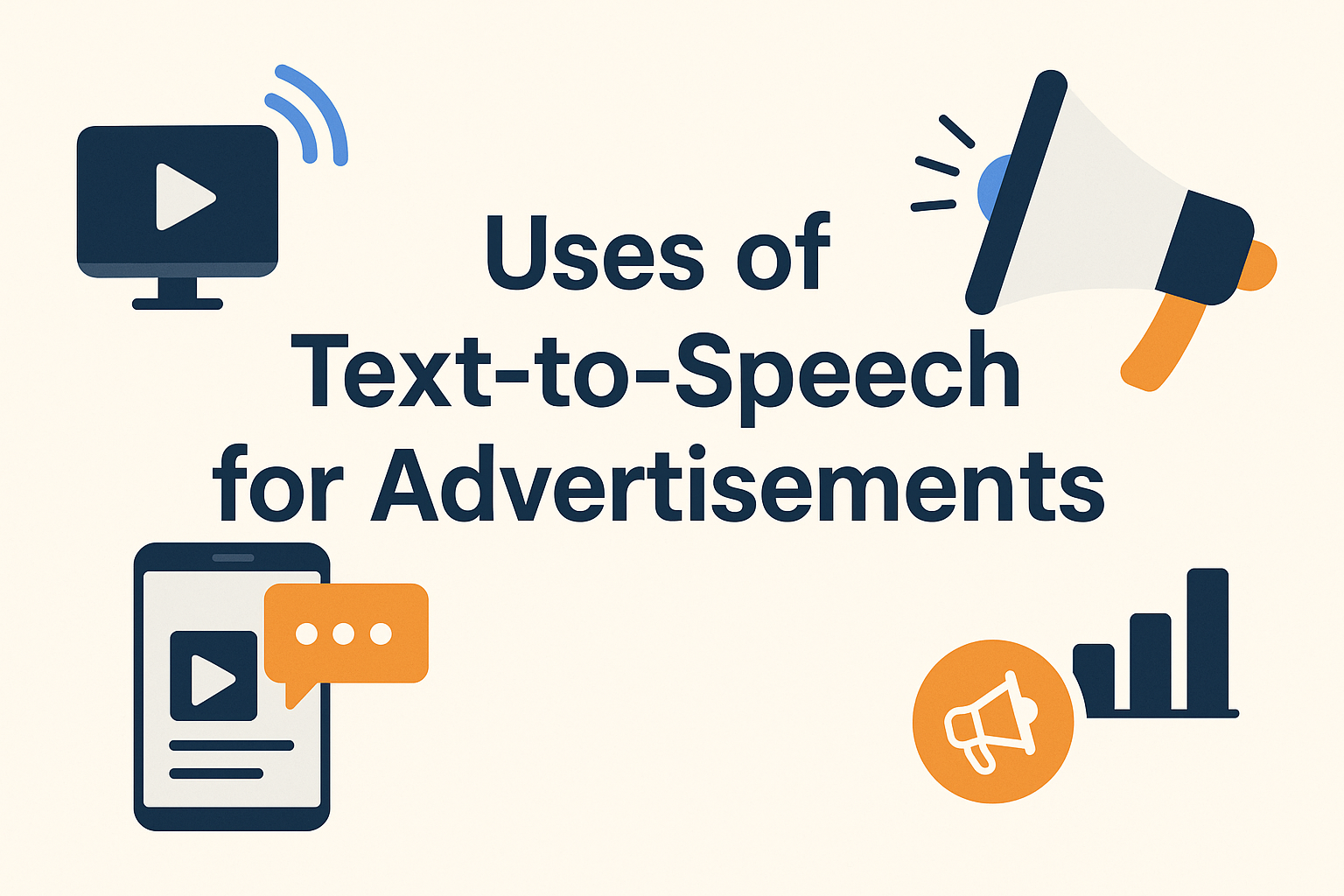Text-to-Speech (TTS) technology transforms written content into natural, human-like voice, making messages more engaging and accessible. In digital advertising, TTS is playing an increasingly important role, helping brands reach wider audiences across multiple platforms.
By converting text into voice, TTS enhances personalization, captures attention quickly, and improves engagement with potential customers. Its versatility allows advertisers to create consistent, scalable audio content that resonates with diverse audiences, making campaigns more effective and memorable.
Harnessing TTS in advertisements is redefining how brands communicate and connect in today’s fast-paced digital world.
How TTS Transforms Advertising Content
TTS transforms advertising content by turning written scripts into expressive audio that fits multiple platforms. Brands can convert ad copy into natural-sounding voiceovers, making campaigns accessible across podcasts, social media, and streaming apps.
It enhances video ads by adding professional narration that brings visuals to life and keeps audiences engaged. Furthermore, TTS enables interactive voice-based advertisements where users can respond or explore products through spoken prompts.
Studies by Adobe and Insider Intelligence show that audio ads increase recall rates by up to 24%, proving how voice-powered storytelling helps brands build stronger emotional connections and deliver personalized ad experiences at scale.
Key Benefits of Using TTS in Advertising
A. Improved Audience Engagement
- Capturing attention with human-like voices
- Personalized messages for different demographics
- Multi-platform accessibility (web, social, mobile)
B. Cost and Time Efficiency
- Reducing the need for voice-over artists
- Rapid scaling for multiple ad campaigns
- Easy updates to ad content without re-recording
C. Enhanced Accessibility and Inclusivity
- Reaching visually impaired or reading-challenged audiences
- Supporting multiple languages and accents
Strategies for Implementing TTS in Ads
Implementing TTS in ads starts with selecting the right voice that matches your brand tone and connects emotionally with your audience. A friendly, confident, or soothing voice can instantly build trust and make your ad memorable.
Integrating TTS across video, audio, and social media campaigns helps brands maintain a unified tone while saving time on voiceover production. It ensures clear messaging across multiple platforms.
Furthermore, testing voice variations and delivery styles allows marketers to measure impact and optimize ad performance. Brands often use A/B testing to find which tone, pitch, and pacing drive higher engagement and conversions in their campaigns.
Case Studies: Successful TTS-Driven Ad Campaigns
TTS-driven ad campaigns deliver higher engagement, stronger recall, and measurable conversions across brands. IKEA ran voice-enabled, TTS ads that invited listeners to interact; the campaign achieved a 7.68% engagement rate, a 4.28% interest rate, and 58.3% reach versus 25 to 35% for standard audio.
AdsWizz reports performance at scale, with a study of 600 audio campaigns showing a 4.0% average conversion rate from ad impressions, and brand case studies such as Carnival Cruise Line recording a 24% uplift in brand awareness tied to bookings.
Lagardère Publicité News highlights “Innovative Voice Ads” to personalize messaging, reflecting how synthetic voice and dynamic creatives are now standard tools for efficient, high-quality audio advertising.
Why Choose Speechactors for Advertising TTS Solutions

Speechactors offers unique features like voice style control (cheerful, dramatic, whisper, etc.) and instructions-based fine-tuning, letting you shape tone, pace, and pitch to match your brand.
Integration is seamless with advertising platforms: you can generate MP3 files or use APIs/exports that plug directly into ad tools and video editors.
Their voice library includes 300+ voices across 140+ languages, delivering natural, expressive speech examples include “Anna” in English, or voices with accents like “Ethan, Olivia, Maisie” in UK English.
Future Trends: TTS in Digital Advertising
Future Trends: TTS in Digital Advertising focus on hyper-personalized AI voices and interactive, voice-first campaigns. Brands are using AI-driven voice personalization to match age, accent, and speaking style for each audience segment. Emotion control sets tone per moment, using prosody, pitch, and pace to deliver excitement, trust, or calm.
Zero-shot cloning supports consistent brand voices across languages, while phoneme control keeps names and product terms accurate. Real-time testing swaps vocal styles based on context, location, and device.
Interactive formats let users speak to ads on smart speakers, apps, CTV, and cars, turning voice into a shoppable interface. On-device synthesis reduces latency, enabling smooth conversations. These shifts make ads clearer, more inclusive, and tightly aligned with brand identity.
Frequently Asked Questions (FAQs)
How does TTS improve ad engagement?
TTS improves ad engagement by using natural-sounding AI voices that capture attention faster. Studies show that ads with human-like narration increase brand recall by up to 40%.
Can TTS match the brand tone?
Yes, TTS can match any brand tone with voice customization features. Brands can select gender, pitch, pace, and emotion, ensuring every ad sounds consistent with their identity.
What platforms support TTS ads?
TTS ads work across digital platforms like YouTube, Instagram, Facebook, Spotify, and programmatic audio networks, allowing brands to reach audiences through multiple channels easily.
How many languages and voices does Speechactors offer?
Speechactors offers over 130 languages and 900+ realistic voices powered by AI, helping businesses create localized and diverse ads for global markets.
Is TTS cost-effective for small businesses?
Yes, TTS is highly cost-effective for small businesses as it removes the need for voiceover artists or studio time, reducing ad production costs by up to 80%.
Conclusion
Text-to-Speech (TTS) has transformed advertising by making messages more engaging, accessible, and personalized. By leveraging TTS, brands can reach wider audiences, enhance emotional connection, and deliver consistent, high-quality voiceovers across campaigns.
Incorporating strategies like voice personalization, multilingual support, and dynamic narration ensures your ads stand out in a crowded market.
Take advantage of TTS technology today and elevate your advertising efforts. Explore Speechactors to create professional, captivating voices that resonate with your audience and drive results.
